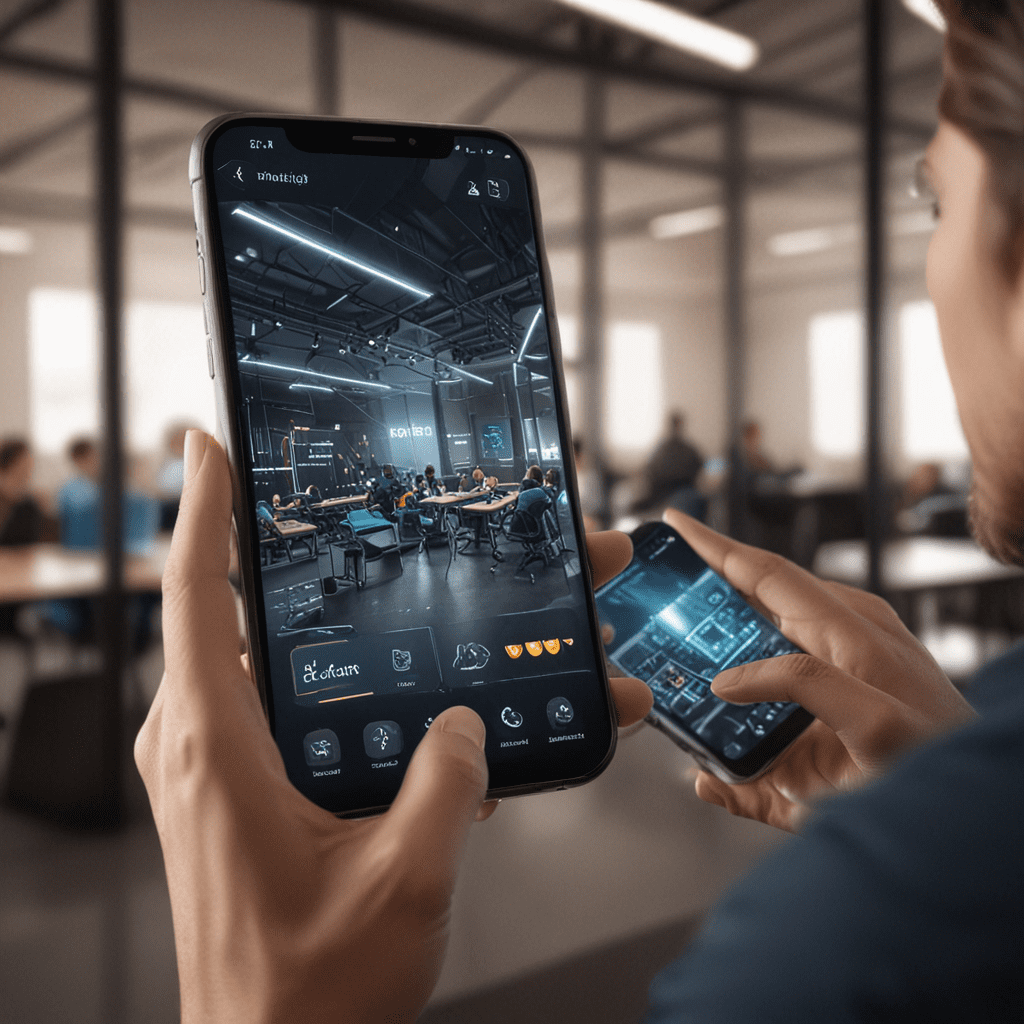Exploring Gamification in Mobile App Development
I. Introduction
Gamification has emerged as a transformative force in the mobile app landscape, elevating user engagement, motivation, and retention. By incorporating game-like elements into non-game applications, developers can enhance the user experience, foster loyalty, and achieve their business goals. This article delves into the realm of gamification, exploring its benefits, techniques, and best practices for mobile app development.
II. Understanding Gamification: The Basics
Gamification involves the strategic application of game mechanics, such as points, rewards, leaderboards, and challenges, to non-game contexts. This approach aims to make traditionally utilitarian activities more engaging and enjoyable, enhancing user motivation and driving desired behaviors. By harnessing the power of game-inspired elements, gamification transforms ordinary apps into compelling experiences that captivate users.
III. Benefits of Gamifying Mobile Apps
- Increased Engagement: Gamification elements foster user engagement by providing immediate feedback, rewarding progress, and fostering a sense of accomplishment, leading to extended app usage.
- Enhanced Motivation: The intrinsic rewards associated with game-like features, such as progress bars and badges, stimulate user motivation and encourage them to complete tasks and achieve goals.
- Improved Retention: Gamification strategies help retain users by fostering a sense of community and loyalty. When users are actively engaged and motivated, they are less likely to abandon the app.
IV. Types of Gamification Techniques
- Points and Rewards: Assigning points for completed tasks or granting rewards for milestones incentivizes users to participate and progress through an app.
- Leaderboards and Rankings: Displaying leaderboards or ranking systems based on user performance fosters healthy competition and encourages users to strive for improvement.
- Challenges and Missions: Introducing time-bound challenges or missions with specific objectives provides users with a sense of purpose and keeps them engaged.
V. Designing Effective Gamification Elements
To create successful gamified mobile apps, it's crucial to design elements that resonate with users. This involves selecting appropriate game mechanics, providing clear goals and feedback, and tailoring rewards to user preferences. Balancing difficulty and progression is also essential to maintain engagement and motivation.
VI. Mobile App Gamification Case Studies
Numerous mobile apps have successfully leveraged gamification to enhance user engagement. Notable examples include Duolingo, which uses language learning as a game, and Nike Run Club, which gamifies fitness tracking. These apps effectively integrate game-like elements to create highly engaging and motivating experiences.
VII. Challenges and Considerations in Gamification
Gamification in mobile apps presents certain challenges and requires careful considerations. One challenge lies in avoiding excessive rewards or punishments, as this can diminish intrinsic motivation. Additionally, maintaining a balance between entertainment and app functionality is crucial to prevent gamification from distracting from the core purpose of the app.
VIII. Measuring the Success of Gamified Apps
To evaluate the effectiveness of gamification, it's essential to measure key metrics. These include user engagement metrics like time spent in-app, daily active users, and app retention rates. Additionally, tracking game-related metrics, such as points earned, rewards unlocked, and leaderboards accessed, provides valuable insights into user engagement.
IX. Best Practices for Mobile App Gamification
- Align with App Goals: Ensure that gamification elements align with the overall goals and values of your app. Avoid introducing game-like features that distract from the primary purpose of the app.
- Target the Right Audience: Consider your target audience when designing gamification elements. Different user groups may respond to different types of game mechanics and rewards.
- Provide Clear Feedback: Offer users timely and clear feedback on their progress, rewards earned, and ranking. This helps maintain motivation and engagement.
X. Future Trends in Mobile App Gamification
Gamification is continuously evolving in the mobile app space. Emerging trends include the integration of artificial intelligence (AI) to personalize gamification experiences, the use of augmented reality (AR) to enhance gameplay, and the rise of social gamification to foster collaboration and competition among users.
FAQ
Q: What are the benefits of gamification in mobile apps?
A: Gamification increases engagement, enhances motivation, and improves retention rates by incorporating game-like elements into non-game apps.
Q: What are some common gamification techniques?
A: Popular gamification techniques include points and rewards, leaderboards and rankings, and challenges and missions.
Q: How do I design effective gamification elements?
A: To design effective gamification elements, select appropriate game mechanics, provide clear goals and feedback, tailor rewards to user preferences, and balance difficulty and progression.


